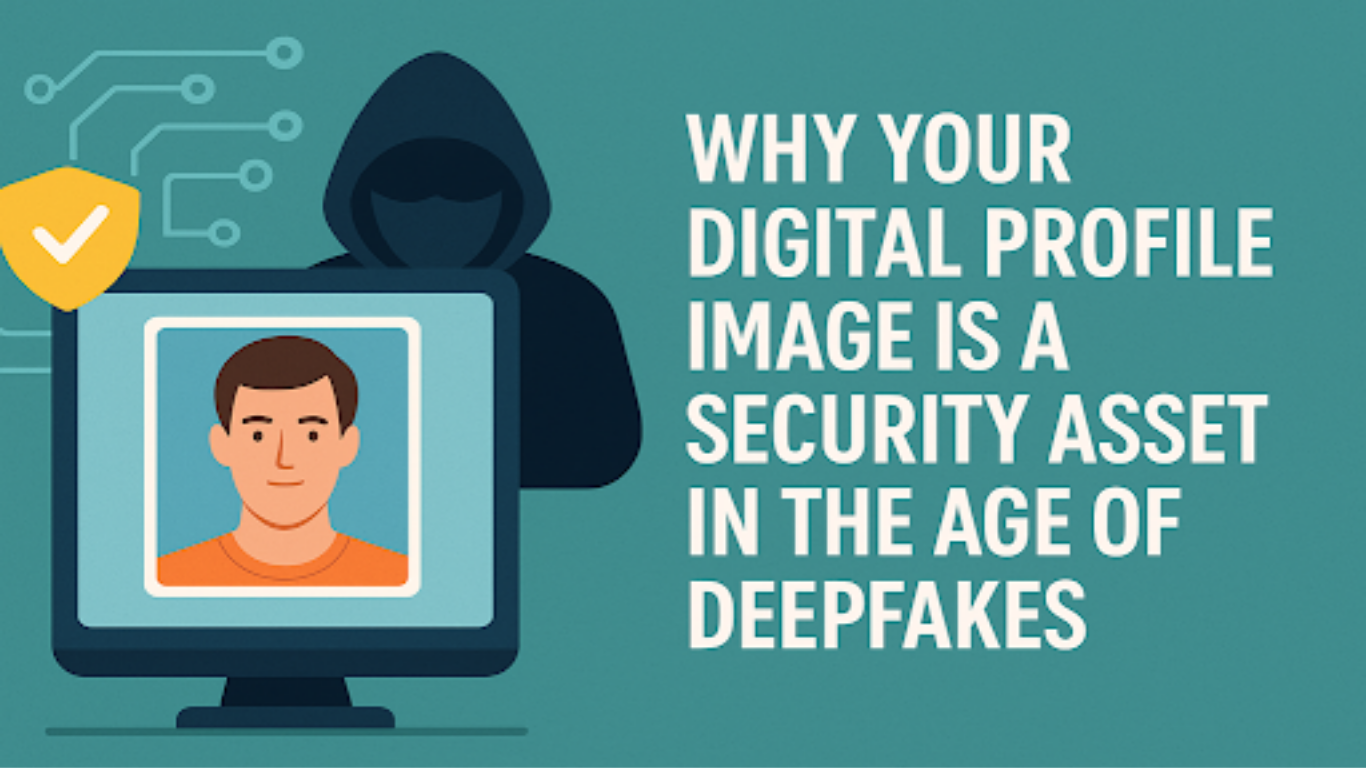
Your profile picture does more than mark your presence online. It’s a handshake, a badge, and often, the first test of whether you seem trustworthy. Whether you’re applying for a job, networking with professionals, or selling a product, your digital profile image shapes how others perceive you and how platforms interpret your identity. But we no longer live in an era where appearance is just aesthetic. From LinkedIn headshots to Instagram profile pictures, your digital image travels across platforms, and each space carries its own security risks.
Your Face Is the First Password
Think about how people recognize you online. Before they read your name, they often see your image. That picture, whether on LinkedIn, Instagram, or even your email, builds instant recognition. On Instagram, frequent profile photo updates are more than just style refreshes; they are subtle signals of account activity and authenticity. But what if someone could copy your face, clone your voice, and impersonate your identity? With deepfake technology, that’s not just possible. It’s already happening.
Criminals use real profile pictures to create hyper-realistic fake videos and accounts. These deepfakes can bypass simple security checks, mislead your contacts, or even manipulate sensitive interactions. That’s why something as small as knowing when to change instagram profile picture or refresh your bio on other visual-first platforms can add a thin but meaningful layer of protection on the internet.
It signals activity, discourages impersonators, and reinforces trust in your digital presence. This makes your digital profile image not just a visual cue but a vulnerability or, if used smartly, a security layer.
How Scammers Use Your Profile Picture
Let’s take a simple example. A scammer downloads your profile image from a public account. They feed it into a deepfake engine trained on facial data. Then, they generate fake videos or real-time avatars pretending to be you. Instagram, with its open visual culture, is a prime target for such impersonation. Fake influencer and brand accounts often start by copying profile pictures from public profiles.
This isn’t science fiction. It’s been used in crypto scams, CEO frauds, and even dating site manipulation. And you don’t need to be a celebrity to be targeted. If your name is linked to any transactional or trust-based platform, marketplace, freelance network, or finance app, your image holds value.
The Rise of Reverse Face Recognition

Facial recognition technology is now accessible even to the average user. Anyone with a browser can reverse-search your image and find your accounts. That includes your employer, future clients, and, unfortunately, impersonators.
By keeping your digital profile image consistent and professionally updated, you make identity tracking easier for trusted users and harder for impersonators to manipulate. More importantly, you gain better control of your brand across the web.
It’s not just about visibility anymore. It’s about integrity.
Choose Images That Speak, But Don’t Overshare
Minimalism is the new security. On Instagram, where aesthetics dominate, a simple, clear headshot can still project professionalism without revealing too much personal context. Choose profile photos that show you clearly but don’t reveal too much of your environment. Avoid using photos with family, interior details, or geolocation clues.
Keep your expression neutral and lighting professional. A warm, clear headshot creates trust without revealing unnecessary data.
Avoid filters or over-editing. AI-based spoofing tools often rely on stylistic image patterns to increase accuracy. Natural-looking images with clean framing are harder to manipulate and easier for platforms to verify.
Treat Your Profile Image as a Dynamic Asset
Don’t leave your profile photo unchanged for years. Static profiles are more likely to be seen as abandoned or automated and more vulnerable to hijacking.
Instead, update your image every few months. Align it with your current platform use, role, or network. This regular renewal signals activity and discourages impersonators who rely on stale identities.
If you’re active on visual-first platforms, your image is not just decorative. It’s your proof of life.
Multi-Platform Monitoring Makes a Difference
Use image monitoring tools to reverse search your own profile image occasionally. See where it appears. You might be surprised at how often it’s cached, copied, or misused. If you find your face linked to unknown profiles, report them fast. Many platforms now offer impersonation reporting based on image misuse. Some even verify visual identity for content creators or professionals.
Digital hygiene is not just about passwords anymore. Your visual data needs the same protection. And platforms like Instagram now allow you to report impersonation directly from a profile. Using these tools quickly can prevent further misuse of your identity.
FAQs
Why does my digital profile image matter for security?
Because deepfake technology can clone faces, your profile picture may be used in identity theft or impersonation. Treat it as a key identity asset.
How can I protect my profile image from misuse?
Keep it updated, avoid overexposure, and monitor where your image appears on online platforms like Instagram. Use clean, professional photos without revealing private context.
Does Instagram offer any tools to protect my profile image?
Yes. Instagram lets you report impersonation, verify your identity, and receive alerts for suspicious activity involving your profile picture.
Should I use the same profile image across platforms?
Yes, but ensure platforms like Instagram are linked to verified accounts you control. Consistency helps build trust, while too much variation weakens recognition.
Can changing my profile image stop impersonation?
It can help. Regular updates make it harder for imposters to use stale images. It also signals active presence to platforms and users.









